-
EXECUTIVE SUMMARY
-
Market Overview
-
Key Findings
-
Market Segmentation
-
Competitive Landscape
-
Challenges and Opportunities
-
Future Outlook
-
MARKET INTRODUCTION
-
Definition
-
Scope of the study
- Research Objective
- Assumption
- Limitations
-
RESEARCH METHODOLOGY
-
Overview
-
Data Mining
-
Secondary Research
-
Primary Research
- Primary Interviews and Information Gathering Process
- Breakdown of Primary Respondents
-
Forecasting Model
-
Market Size Estimation
- Bottom-Up Approach
- Top-Down Approach
-
Data Triangulation
-
Validation
-
MARKET DYNAMICS
-
Overview
-
Drivers
-
Restraints
-
Opportunities
-
MARKET FACTOR ANALYSIS
-
Value chain Analysis
-
Porter's Five Forces Analysis
- Bargaining Power of Suppliers
- Bargaining Power of Buyers
- Threat of New Entrants
- Threat of Substitutes
- Intensity of Rivalry
-
COVID-19 Impact Analysis
- Market Impact Analysis
- Regional Impact
- Opportunity and Threat Analysis
-
AUTOMOTIVE WINDOW AND EXTERIOR SEALING SYSTEM MARKET, BY APPLICATION (USD BILLION)
-
Side Windows
-
Windshields
-
Sunroofs
-
Rear Windows
-
AUTOMOTIVE WINDOW AND EXTERIOR SEALING SYSTEM MARKET, BY MATERIAL TYPE (USD BILLION)
-
Rubber
-
Thermoplastic Elastomers
-
Polyurethane
-
Silicone
-
AUTOMOTIVE WINDOW AND EXTERIOR SEALING SYSTEM MARKET, BY VEHICLE TYPE (USD BILLION)
-
Passenger Vehicles
-
Commercial Vehicles
-
Electric Vehicles
-
AUTOMOTIVE WINDOW AND EXTERIOR SEALING SYSTEM MARKET, BY FUNCTIONALITY (USD BILLION)
-
Sealing
-
Noise Reduction
-
Vibration Control
-
Weather Resistance
-
AUTOMOTIVE WINDOW AND EXTERIOR SEALING SYSTEM MARKET, BY REGIONAL (USD BILLION)
-
North America
- US
- Canada
-
Europe
- Germany
- UK
- France
- Russia
- Italy
- Spain
- Rest of Europe
-
APAC
- China
- India
- Japan
- South Korea
- Malaysia
- Thailand
- Indonesia
- Rest of APAC
-
South America
- Brazil
- Mexico
- Argentina
- Rest of South America
-
MEA
- GCC Countries
- South Africa
- Rest of MEA
-
COMPETITIVE LANDSCAPE
-
Overview
-
Competitive Analysis
-
Market share Analysis
-
Major Growth Strategy in the Automotive Window and Exterior Sealing System Market
-
Competitive Benchmarking
-
Leading Players in Terms of Number of Developments in the Automotive Window and Exterior Sealing System Market
-
Key developments and growth strategies
- New Product Launch/Service Deployment
- Merger & Acquisitions
- Joint Ventures
-
Major Players Financial Matrix
- Sales and Operating Income
- Major Players R&D Expenditure. 2023
-
COMPANY PROFILES
-
Hutchinson
- Financial Overview
- Products Offered
- Key Developments
- SWOT Analysis
- Key Strategies
-
Porsche AG
- Financial Overview
- Products Offered
- Key Developments
- SWOT Analysis
- Key Strategies
-
Daimler AG
- Financial Overview
- Products Offered
- Key Developments
- SWOT Analysis
- Key Strategies
-
Carlisle Companies
- Financial Overview
- Products Offered
- Key Developments
- SWOT Analysis
- Key Strategies
-
HB Fuller
- Financial Overview
- Products Offered
- Key Developments
- SWOT Analysis
- Key Strategies
-
BorgWarner
- Financial Overview
- Products Offered
- Key Developments
- SWOT Analysis
- Key Strategies
-
Dow Inc.
- Financial Overview
- Products Offered
- Key Developments
- SWOT Analysis
- Key Strategies
-
3M
- Financial Overview
- Products Offered
- Key Developments
- SWOT Analysis
- Key Strategies
-
SaintGobain
- Financial Overview
- Products Offered
- Key Developments
- SWOT Analysis
- Key Strategies
-
Toyota Boshoku
- Financial Overview
- Products Offered
- Key Developments
- SWOT Analysis
- Key Strategies
-
Cooper Standard
- Financial Overview
- Products Offered
- Key Developments
- SWOT Analysis
- Key Strategies
-
Trelleborg
- Financial Overview
- Products Offered
- Key Developments
- SWOT Analysis
- Key Strategies
-
Magna International
- Financial Overview
- Products Offered
- Key Developments
- SWOT Analysis
- Key Strategies
-
Groupe Renault
- Financial Overview
- Products Offered
- Key Developments
- SWOT Analysis
- Key Strategies
-
Sika AG
- Financial Overview
- Products Offered
- Key Developments
- SWOT Analysis
- Key Strategies
-
APPENDIX
-
References
-
Related Reports
-
LIST OF TABLES
-
LIST OF ASSUMPTIONS
-
NORTH AMERICA AUTOMOTIVE WINDOW AND EXTERIOR SEALING SYSTEM MARKET SIZE ESTIMATES & FORECAST, BY APPLICATION, 2019-2032 (USD BILLIONS)
-
NORTH AMERICA AUTOMOTIVE WINDOW AND EXTERIOR SEALING SYSTEM MARKET SIZE ESTIMATES & FORECAST, BY MATERIAL TYPE, 2019-2032 (USD BILLIONS)
-
NORTH AMERICA AUTOMOTIVE WINDOW AND EXTERIOR SEALING SYSTEM MARKET SIZE ESTIMATES & FORECAST, BY VEHICLE TYPE, 2019-2032 (USD BILLIONS)
-
NORTH AMERICA AUTOMOTIVE WINDOW AND EXTERIOR SEALING SYSTEM MARKET SIZE ESTIMATES & FORECAST, BY FUNCTIONALITY, 2019-2032 (USD BILLIONS)
-
NORTH AMERICA AUTOMOTIVE WINDOW AND EXTERIOR SEALING SYSTEM MARKET SIZE ESTIMATES & FORECAST, BY REGIONAL, 2019-2032 (USD BILLIONS)
-
US AUTOMOTIVE WINDOW AND EXTERIOR SEALING SYSTEM MARKET SIZE ESTIMATES & FORECAST, BY APPLICATION, 2019-2032 (USD BILLIONS)
-
US AUTOMOTIVE WINDOW AND EXTERIOR SEALING SYSTEM MARKET SIZE ESTIMATES & FORECAST, BY MATERIAL TYPE, 2019-2032 (USD BILLIONS)
-
US AUTOMOTIVE WINDOW AND EXTERIOR SEALING SYSTEM MARKET SIZE ESTIMATES & FORECAST, BY VEHICLE TYPE, 2019-2032 (USD BILLIONS)
-
US AUTOMOTIVE WINDOW AND EXTERIOR SEALING SYSTEM MARKET SIZE ESTIMATES & FORECAST, BY FUNCTIONALITY, 2019-2032 (USD BILLIONS)
-
US AUTOMOTIVE WINDOW AND EXTERIOR SEALING SYSTEM MARKET SIZE ESTIMATES & FORECAST, BY REGIONAL, 2019-2032 (USD BILLIONS)
-
CANADA AUTOMOTIVE WINDOW AND EXTERIOR SEALING SYSTEM MARKET SIZE ESTIMATES & FORECAST, BY APPLICATION, 2019-2032 (USD BILLIONS)
-
CANADA AUTOMOTIVE WINDOW AND EXTERIOR SEALING SYSTEM MARKET SIZE ESTIMATES & FORECAST, BY MATERIAL TYPE, 2019-2032 (USD BILLIONS)
-
CANADA AUTOMOTIVE WINDOW AND EXTERIOR SEALING SYSTEM MARKET SIZE ESTIMATES & FORECAST, BY VEHICLE TYPE, 2019-2032 (USD BILLIONS)
-
CANADA AUTOMOTIVE WINDOW AND EXTERIOR SEALING SYSTEM MARKET SIZE ESTIMATES & FORECAST, BY FUNCTIONALITY, 2019-2032 (USD BILLIONS)
-
CANADA AUTOMOTIVE WINDOW AND EXTERIOR SEALING SYSTEM MARKET SIZE ESTIMATES & FORECAST, BY REGIONAL, 2019-2032 (USD BILLIONS)
-
EUROPE AUTOMOTIVE WINDOW AND EXTERIOR SEALING SYSTEM MARKET SIZE ESTIMATES & FORECAST, BY APPLICATION, 2019-2032 (USD BILLIONS)
-
EUROPE AUTOMOTIVE WINDOW AND EXTERIOR SEALING SYSTEM MARKET SIZE ESTIMATES & FORECAST, BY MATERIAL TYPE, 2019-2032 (USD BILLIONS)
-
EUROPE AUTOMOTIVE WINDOW AND EXTERIOR SEALING SYSTEM MARKET SIZE ESTIMATES & FORECAST, BY VEHICLE TYPE, 2019-2032 (USD BILLIONS)
-
EUROPE AUTOMOTIVE WINDOW AND EXTERIOR SEALING SYSTEM MARKET SIZE ESTIMATES & FORECAST, BY FUNCTIONALITY, 2019-2032 (USD BILLIONS)
-
EUROPE AUTOMOTIVE WINDOW AND EXTERIOR SEALING SYSTEM MARKET SIZE ESTIMATES & FORECAST, BY REGIONAL, 2019-2032 (USD BILLIONS)
-
GERMANY AUTOMOTIVE WINDOW AND EXTERIOR SEALING SYSTEM MARKET SIZE ESTIMATES & FORECAST, BY APPLICATION, 2019-2032 (USD BILLIONS)
-
GERMANY AUTOMOTIVE WINDOW AND EXTERIOR SEALING SYSTEM MARKET SIZE ESTIMATES & FORECAST, BY MATERIAL TYPE, 2019-2032 (USD BILLIONS)
-
GERMANY AUTOMOTIVE WINDOW AND EXTERIOR SEALING SYSTEM MARKET SIZE ESTIMATES & FORECAST, BY VEHICLE TYPE, 2019-2032 (USD BILLIONS)
-
GERMANY AUTOMOTIVE WINDOW AND EXTERIOR SEALING SYSTEM MARKET SIZE ESTIMATES & FORECAST, BY FUNCTIONALITY, 2019-2032 (USD BILLIONS)
-
GERMANY AUTOMOTIVE WINDOW AND EXTERIOR SEALING SYSTEM MARKET SIZE ESTIMATES & FORECAST, BY REGIONAL, 2019-2032 (USD BILLIONS)
-
UK AUTOMOTIVE WINDOW AND EXTERIOR SEALING SYSTEM MARKET SIZE ESTIMATES & FORECAST, BY APPLICATION, 2019-2032 (USD BILLIONS)
-
UK AUTOMOTIVE WINDOW AND EXTERIOR SEALING SYSTEM MARKET SIZE ESTIMATES & FORECAST, BY MATERIAL TYPE, 2019-2032 (USD BILLIONS)
-
UK AUTOMOTIVE WINDOW AND EXTERIOR SEALING SYSTEM MARKET SIZE ESTIMATES & FORECAST, BY VEHICLE TYPE, 2019-2032 (USD BILLIONS)
-
UK AUTOMOTIVE WINDOW AND EXTERIOR SEALING SYSTEM MARKET SIZE ESTIMATES & FORECAST, BY FUNCTIONALITY, 2019-2032 (USD BILLIONS)
-
UK AUTOMOTIVE WINDOW AND EXTERIOR SEALING SYSTEM MARKET SIZE ESTIMATES & FORECAST, BY REGIONAL, 2019-2032 (USD BILLIONS)
-
FRANCE AUTOMOTIVE WINDOW AND EXTERIOR SEALING SYSTEM MARKET SIZE ESTIMATES & FORECAST, BY APPLICATION, 2019-2032 (USD BILLIONS)
-
FRANCE AUTOMOTIVE WINDOW AND EXTERIOR SEALING SYSTEM MARKET SIZE ESTIMATES & FORECAST, BY MATERIAL TYPE, 2019-2032 (USD BILLIONS)
-
FRANCE AUTOMOTIVE WINDOW AND EXTERIOR SEALING SYSTEM MARKET SIZE ESTIMATES & FORECAST, BY VEHICLE TYPE, 2019-2032 (USD BILLIONS)
-
FRANCE AUTOMOTIVE WINDOW AND EXTERIOR SEALING SYSTEM MARKET SIZE ESTIMATES & FORECAST, BY FUNCTIONALITY, 2019-2032 (USD BILLIONS)
-
FRANCE AUTOMOTIVE WINDOW AND EXTERIOR SEALING SYSTEM MARKET SIZE ESTIMATES & FORECAST, BY REGIONAL, 2019-2032 (USD BILLIONS)
-
RUSSIA AUTOMOTIVE WINDOW AND EXTERIOR SEALING SYSTEM MARKET SIZE ESTIMATES & FORECAST, BY APPLICATION, 2019-2032 (USD BILLIONS)
-
RUSSIA AUTOMOTIVE WINDOW AND EXTERIOR SEALING SYSTEM MARKET SIZE ESTIMATES & FORECAST, BY MATERIAL TYPE, 2019-2032 (USD BILLIONS)
-
RUSSIA AUTOMOTIVE WINDOW AND EXTERIOR SEALING SYSTEM MARKET SIZE ESTIMATES & FORECAST, BY VEHICLE TYPE, 2019-2032 (USD BILLIONS)
-
RUSSIA AUTOMOTIVE WINDOW AND EXTERIOR SEALING SYSTEM MARKET SIZE ESTIMATES & FORECAST, BY FUNCTIONALITY, 2019-2032 (USD BILLIONS)
-
RUSSIA AUTOMOTIVE WINDOW AND EXTERIOR SEALING SYSTEM MARKET SIZE ESTIMATES & FORECAST, BY REGIONAL, 2019-2032 (USD BILLIONS)
-
ITALY AUTOMOTIVE WINDOW AND EXTERIOR SEALING SYSTEM MARKET SIZE ESTIMATES & FORECAST, BY APPLICATION, 2019-2032 (USD BILLIONS)
-
ITALY AUTOMOTIVE WINDOW AND EXTERIOR SEALING SYSTEM MARKET SIZE ESTIMATES & FORECAST, BY MATERIAL TYPE, 2019-2032 (USD BILLIONS)
-
ITALY AUTOMOTIVE WINDOW AND EXTERIOR SEALING SYSTEM MARKET SIZE ESTIMATES & FORECAST, BY VEHICLE TYPE, 2019-2032 (USD BILLIONS)
-
ITALY AUTOMOTIVE WINDOW AND EXTERIOR SEALING SYSTEM MARKET SIZE ESTIMATES & FORECAST, BY FUNCTIONALITY, 2019-2032 (USD BILLIONS)
-
ITALY AUTOMOTIVE WINDOW AND EXTERIOR SEALING SYSTEM MARKET SIZE ESTIMATES & FORECAST, BY REGIONAL, 2019-2032 (USD BILLIONS)
-
SPAIN AUTOMOTIVE WINDOW AND EXTERIOR SEALING SYSTEM MARKET SIZE ESTIMATES & FORECAST, BY APPLICATION, 2019-2032 (USD BILLIONS)
-
SPAIN AUTOMOTIVE WINDOW AND EXTERIOR SEALING SYSTEM MARKET SIZE ESTIMATES & FORECAST, BY MATERIAL TYPE, 2019-2032 (USD BILLIONS)
-
SPAIN AUTOMOTIVE WINDOW AND EXTERIOR SEALING SYSTEM MARKET SIZE ESTIMATES & FORECAST, BY VEHICLE TYPE, 2019-2032 (USD BILLIONS)
-
SPAIN AUTOMOTIVE WINDOW AND EXTERIOR SEALING SYSTEM MARKET SIZE ESTIMATES & FORECAST, BY FUNCTIONALITY, 2019-2032 (USD BILLIONS)
-
SPAIN AUTOMOTIVE WINDOW AND EXTERIOR SEALING SYSTEM MARKET SIZE ESTIMATES & FORECAST, BY REGIONAL, 2019-2032 (USD BILLIONS)
-
REST OF EUROPE AUTOMOTIVE WINDOW AND EXTERIOR SEALING SYSTEM MARKET SIZE ESTIMATES & FORECAST, BY APPLICATION, 2019-2032 (USD BILLIONS)
-
REST OF EUROPE AUTOMOTIVE WINDOW AND EXTERIOR SEALING SYSTEM MARKET SIZE ESTIMATES & FORECAST, BY MATERIAL TYPE, 2019-2032 (USD BILLIONS)
-
REST OF EUROPE AUTOMOTIVE WINDOW AND EXTERIOR SEALING SYSTEM MARKET SIZE ESTIMATES & FORECAST, BY VEHICLE TYPE, 2019-2032 (USD BILLIONS)
-
REST OF EUROPE AUTOMOTIVE WINDOW AND EXTERIOR SEALING SYSTEM MARKET SIZE ESTIMATES & FORECAST, BY FUNCTIONALITY, 2019-2032 (USD BILLIONS)
-
REST OF EUROPE AUTOMOTIVE WINDOW AND EXTERIOR SEALING SYSTEM MARKET SIZE ESTIMATES & FORECAST, BY REGIONAL, 2019-2032 (USD BILLIONS)
-
APAC AUTOMOTIVE WINDOW AND EXTERIOR SEALING SYSTEM MARKET SIZE ESTIMATES & FORECAST, BY APPLICATION, 2019-2032 (USD BILLIONS)
-
APAC AUTOMOTIVE WINDOW AND EXTERIOR SEALING SYSTEM MARKET SIZE ESTIMATES & FORECAST, BY MATERIAL TYPE, 2019-2032 (USD BILLIONS)
-
APAC AUTOMOTIVE WINDOW AND EXTERIOR SEALING SYSTEM MARKET SIZE ESTIMATES & FORECAST, BY VEHICLE TYPE, 2019-2032 (USD BILLIONS)
-
APAC AUTOMOTIVE WINDOW AND EXTERIOR SEALING SYSTEM MARKET SIZE ESTIMATES & FORECAST, BY FUNCTIONALITY, 2019-2032 (USD BILLIONS)
-
APAC AUTOMOTIVE WINDOW AND EXTERIOR SEALING SYSTEM MARKET SIZE ESTIMATES & FORECAST, BY REGIONAL, 2019-2032 (USD BILLIONS)
-
CHINA AUTOMOTIVE WINDOW AND EXTERIOR SEALING SYSTEM MARKET SIZE ESTIMATES & FORECAST, BY APPLICATION, 2019-2032 (USD BILLIONS)
-
CHINA AUTOMOTIVE WINDOW AND EXTERIOR SEALING SYSTEM MARKET SIZE ESTIMATES & FORECAST, BY MATERIAL TYPE, 2019-2032 (USD BILLIONS)
-
CHINA AUTOMOTIVE WINDOW AND EXTERIOR SEALING SYSTEM MARKET SIZE ESTIMATES & FORECAST, BY VEHICLE TYPE, 2019-2032 (USD BILLIONS)
-
CHINA AUTOMOTIVE WINDOW AND EXTERIOR SEALING SYSTEM MARKET SIZE ESTIMATES & FORECAST, BY FUNCTIONALITY, 2019-2032 (USD BILLIONS)
-
CHINA AUTOMOTIVE WINDOW AND EXTERIOR SEALING SYSTEM MARKET SIZE ESTIMATES & FORECAST, BY REGIONAL, 2019-2032 (USD BILLIONS)
-
INDIA AUTOMOTIVE WINDOW AND EXTERIOR SEALING SYSTEM MARKET SIZE ESTIMATES & FORECAST, BY APPLICATION, 2019-2032 (USD BILLIONS)
-
INDIA AUTOMOTIVE WINDOW AND EXTERIOR SEALING SYSTEM MARKET SIZE ESTIMATES & FORECAST, BY MATERIAL TYPE, 2019-2032 (USD BILLIONS)
-
INDIA AUTOMOTIVE WINDOW AND EXTERIOR SEALING SYSTEM MARKET SIZE ESTIMATES & FORECAST, BY VEHICLE TYPE, 2019-2032 (USD BILLIONS)
-
INDIA AUTOMOTIVE WINDOW AND EXTERIOR SEALING SYSTEM MARKET SIZE ESTIMATES & FORECAST, BY FUNCTIONALITY, 2019-2032 (USD BILLIONS)
-
INDIA AUTOMOTIVE WINDOW AND EXTERIOR SEALING SYSTEM MARKET SIZE ESTIMATES & FORECAST, BY REGIONAL, 2019-2032 (USD BILLIONS)
-
JAPAN AUTOMOTIVE WINDOW AND EXTERIOR SEALING SYSTEM MARKET SIZE ESTIMATES & FORECAST, BY APPLICATION, 2019-2032 (USD BILLIONS)
-
JAPAN AUTOMOTIVE WINDOW AND EXTERIOR SEALING SYSTEM MARKET SIZE ESTIMATES & FORECAST, BY MATERIAL TYPE, 2019-2032 (USD BILLIONS)
-
JAPAN AUTOMOTIVE WINDOW AND EXTERIOR SEALING SYSTEM MARKET SIZE ESTIMATES & FORECAST, BY VEHICLE TYPE, 2019-2032 (USD BILLIONS)
-
JAPAN AUTOMOTIVE WINDOW AND EXTERIOR SEALING SYSTEM MARKET SIZE ESTIMATES & FORECAST, BY FUNCTIONALITY, 2019-2032 (USD BILLIONS)
-
JAPAN AUTOMOTIVE WINDOW AND EXTERIOR SEALING SYSTEM MARKET SIZE ESTIMATES & FORECAST, BY REGIONAL, 2019-2032 (USD BILLIONS)
-
SOUTH KOREA AUTOMOTIVE WINDOW AND EXTERIOR SEALING SYSTEM MARKET SIZE ESTIMATES & FORECAST, BY APPLICATION, 2019-2032 (USD BILLIONS)
-
SOUTH KOREA AUTOMOTIVE WINDOW AND EXTERIOR SEALING SYSTEM MARKET SIZE ESTIMATES & FORECAST, BY MATERIAL TYPE, 2019-2032 (USD BILLIONS)
-
SOUTH KOREA AUTOMOTIVE WINDOW AND EXTERIOR SEALING SYSTEM MARKET SIZE ESTIMATES & FORECAST, BY VEHICLE TYPE, 2019-2032 (USD BILLIONS)
-
SOUTH KOREA AUTOMOTIVE WINDOW AND EXTERIOR SEALING SYSTEM MARKET SIZE ESTIMATES & FORECAST, BY FUNCTIONALITY, 2019-2032 (USD BILLIONS)
-
SOUTH KOREA AUTOMOTIVE WINDOW AND EXTERIOR SEALING SYSTEM MARKET SIZE ESTIMATES & FORECAST, BY REGIONAL, 2019-2032 (USD BILLIONS)
-
MALAYSIA AUTOMOTIVE WINDOW AND EXTERIOR SEALING SYSTEM MARKET SIZE ESTIMATES & FORECAST, BY APPLICATION, 2019-2032 (USD BILLIONS)
-
MALAYSIA AUTOMOTIVE WINDOW AND EXTERIOR SEALING SYSTEM MARKET SIZE ESTIMATES & FORECAST, BY MATERIAL TYPE, 2019-2032 (USD BILLIONS)
-
MALAYSIA AUTOMOTIVE WINDOW AND EXTERIOR SEALING SYSTEM MARKET SIZE ESTIMATES & FORECAST, BY VEHICLE TYPE, 2019-2032 (USD BILLIONS)
-
MALAYSIA AUTOMOTIVE WINDOW AND EXTERIOR SEALING SYSTEM MARKET SIZE ESTIMATES & FORECAST, BY FUNCTIONALITY, 2019-2032 (USD BILLIONS)
-
MALAYSIA AUTOMOTIVE WINDOW AND EXTERIOR SEALING SYSTEM MARKET SIZE ESTIMATES & FORECAST, BY REGIONAL, 2019-2032 (USD BILLIONS)
-
THAILAND AUTOMOTIVE WINDOW AND EXTERIOR SEALING SYSTEM MARKET SIZE ESTIMATES & FORECAST, BY APPLICATION, 2019-2032 (USD BILLIONS)
-
THAILAND AUTOMOTIVE WINDOW AND EXTERIOR SEALING SYSTEM MARKET SIZE ESTIMATES & FORECAST, BY MATERIAL TYPE, 2019-2032 (USD BILLIONS)
-
THAILAND AUTOMOTIVE WINDOW AND EXTERIOR SEALING SYSTEM MARKET SIZE ESTIMATES & FORECAST, BY VEHICLE TYPE, 2019-2032 (USD BILLIONS)
-
THAILAND AUTOMOTIVE WINDOW AND EXTERIOR SEALING SYSTEM MARKET SIZE ESTIMATES & FORECAST, BY FUNCTIONALITY, 2019-2032 (USD BILLIONS)
-
THAILAND AUTOMOTIVE WINDOW AND EXTERIOR SEALING SYSTEM MARKET SIZE ESTIMATES & FORECAST, BY REGIONAL, 2019-2032 (USD BILLIONS)
-
INDONESIA AUTOMOTIVE WINDOW AND EXTERIOR SEALING SYSTEM MARKET SIZE ESTIMATES & FORECAST, BY APPLICATION, 2019-2032 (USD BILLIONS)
-
INDONESIA AUTOMOTIVE WINDOW AND EXTERIOR SEALING SYSTEM MARKET SIZE ESTIMATES & FORECAST, BY MATERIAL TYPE, 2019-2032 (USD BILLIONS)
-
INDONESIA AUTOMOTIVE WINDOW AND EXTERIOR SEALING SYSTEM MARKET SIZE ESTIMATES & FORECAST, BY VEHICLE TYPE, 2019-2032 (USD BILLIONS)
-
INDONESIA AUTOMOTIVE WINDOW AND EXTERIOR SEALING SYSTEM MARKET SIZE ESTIMATES & FORECAST, BY FUNCTIONALITY, 2019-2032 (USD BILLIONS)
-
INDONESIA AUTOMOTIVE WINDOW AND EXTERIOR SEALING SYSTEM MARKET SIZE ESTIMATES & FORECAST, BY REGIONAL, 2019-2032 (USD BILLIONS)
-
REST OF APAC AUTOMOTIVE WINDOW AND EXTERIOR SEALING SYSTEM MARKET SIZE ESTIMATES & FORECAST, BY APPLICATION, 2019-2032 (USD BILLIONS)
-
REST OF APAC AUTOMOTIVE WINDOW AND EXTERIOR SEALING SYSTEM MARKET SIZE ESTIMATES & FORECAST, BY MATERIAL TYPE, 2019-2032 (USD BILLIONS)
-
REST OF APAC AUTOMOTIVE WINDOW AND EXTERIOR SEALING SYSTEM MARKET SIZE ESTIMATES & FORECAST, BY VEHICLE TYPE, 2019-2032 (USD BILLIONS)
-
REST OF APAC AUTOMOTIVE WINDOW AND EXTERIOR SEALING SYSTEM MARKET SIZE ESTIMATES & FORECAST, BY FUNCTIONALITY, 2019-2032 (USD BILLIONS)
-
REST OF APAC AUTOMOTIVE WINDOW AND EXTERIOR SEALING SYSTEM MARKET SIZE ESTIMATES & FORECAST, BY REGIONAL, 2019-2032 (USD BILLIONS)
-
SOUTH AMERICA AUTOMOTIVE WINDOW AND EXTERIOR SEALING SYSTEM MARKET SIZE ESTIMATES & FORECAST, BY APPLICATION, 2019-2032 (USD BILLIONS)
-
SOUTH AMERICA AUTOMOTIVE WINDOW AND EXTERIOR SEALING SYSTEM MARKET SIZE ESTIMATES & FORECAST, BY MATERIAL TYPE, 2019-2032 (USD BILLIONS)
-
SOUTH AMERICA AUTOMOTIVE WINDOW AND EXTERIOR SEALING SYSTEM MARKET SIZE ESTIMATES & FORECAST, BY VEHICLE TYPE, 2019-2032 (USD BILLIONS)
-
SOUTH AMERICA AUTOMOTIVE WINDOW AND EXTERIOR SEALING SYSTEM MARKET SIZE ESTIMATES & FORECAST, BY FUNCTIONALITY, 2019-2032 (USD BILLIONS)
-
SOUTH AMERICA AUTOMOTIVE WINDOW AND EXTERIOR SEALING SYSTEM MARKET SIZE ESTIMATES & FORECAST, BY REGIONAL, 2019-2032 (USD BILLIONS)
-
BRAZIL AUTOMOTIVE WINDOW AND EXTERIOR SEALING SYSTEM MARKET SIZE ESTIMATES & FORECAST, BY APPLICATION, 2019-2032 (USD BILLIONS)
-
BRAZIL AUTOMOTIVE WINDOW AND EXTERIOR SEALING SYSTEM MARKET SIZE ESTIMATES & FORECAST, BY MATERIAL TYPE, 2019-2032 (USD BILLIONS)
-
BRAZIL AUTOMOTIVE WINDOW AND EXTERIOR SEALING SYSTEM MARKET SIZE ESTIMATES & FORECAST, BY VEHICLE TYPE, 2019-2032 (USD BILLIONS)
-
BRAZIL AUTOMOTIVE WINDOW AND EXTERIOR SEALING SYSTEM MARKET SIZE ESTIMATES & FORECAST, BY FUNCTIONALITY, 2019-2032 (USD BILLIONS)
-
BRAZIL AUTOMOTIVE WINDOW AND EXTERIOR SEALING SYSTEM MARKET SIZE ESTIMATES & FORECAST, BY REGIONAL, 2019-2032 (USD BILLIONS)
-
MEXICO AUTOMOTIVE WINDOW AND EXTERIOR SEALING SYSTEM MARKET SIZE ESTIMATES & FORECAST, BY APPLICATION, 2019-2032 (USD BILLIONS)
-
MEXICO AUTOMOTIVE WINDOW AND EXTERIOR SEALING SYSTEM MARKET SIZE ESTIMATES & FORECAST, BY MATERIAL TYPE, 2019-2032 (USD BILLIONS)
-
MEXICO AUTOMOTIVE WINDOW AND EXTERIOR SEALING SYSTEM MARKET SIZE ESTIMATES & FORECAST, BY VEHICLE TYPE, 2019-2032 (USD BILLIONS)
-
MEXICO AUTOMOTIVE WINDOW AND EXTERIOR SEALING SYSTEM MARKET SIZE ESTIMATES & FORECAST, BY FUNCTIONALITY, 2019-2032 (USD BILLIONS)
-
MEXICO AUTOMOTIVE WINDOW AND EXTERIOR SEALING SYSTEM MARKET SIZE ESTIMATES & FORECAST, BY REGIONAL, 2019-2032 (USD BILLIONS)
-
ARGENTINA AUTOMOTIVE WINDOW AND EXTERIOR SEALING SYSTEM MARKET SIZE ESTIMATES & FORECAST, BY APPLICATION, 2019-2032 (USD BILLIONS)
-
ARGENTINA AUTOMOTIVE WINDOW AND EXTERIOR SEALING SYSTEM MARKET SIZE ESTIMATES & FORECAST, BY MATERIAL TYPE, 2019-2032 (USD BILLIONS)
-
ARGENTINA AUTOMOTIVE WINDOW AND EXTERIOR SEALING SYSTEM MARKET SIZE ESTIMATES & FORECAST, BY VEHICLE TYPE, 2019-2032 (USD BILLIONS)
-
ARGENTINA AUTOMOTIVE WINDOW AND EXTERIOR SEALING SYSTEM MARKET SIZE ESTIMATES & FORECAST, BY FUNCTIONALITY, 2019-2032 (USD BILLIONS)
-
ARGENTINA AUTOMOTIVE WINDOW AND EXTERIOR SEALING SYSTEM MARKET SIZE ESTIMATES & FORECAST, BY REGIONAL, 2019-2032 (USD BILLIONS)
-
REST OF SOUTH AMERICA AUTOMOTIVE WINDOW AND EXTERIOR SEALING SYSTEM MARKET SIZE ESTIMATES & FORECAST, BY APPLICATION, 2019-2032 (USD BILLIONS)
-
REST OF SOUTH AMERICA AUTOMOTIVE WINDOW AND EXTERIOR SEALING SYSTEM MARKET SIZE ESTIMATES & FORECAST, BY MATERIAL TYPE, 2019-2032 (USD BILLIONS)
-
REST OF SOUTH AMERICA AUTOMOTIVE WINDOW AND EXTERIOR SEALING SYSTEM MARKET SIZE ESTIMATES & FORECAST, BY VEHICLE TYPE, 2019-2032 (USD BILLIONS)
-
REST OF SOUTH AMERICA AUTOMOTIVE WINDOW AND EXTERIOR SEALING SYSTEM MARKET SIZE ESTIMATES & FORECAST, BY FUNCTIONALITY, 2019-2032 (USD BILLIONS)
-
REST OF SOUTH AMERICA AUTOMOTIVE WINDOW AND EXTERIOR SEALING SYSTEM MARKET SIZE ESTIMATES & FORECAST, BY REGIONAL, 2019-2032 (USD BILLIONS)
-
MEA AUTOMOTIVE WINDOW AND EXTERIOR SEALING SYSTEM MARKET SIZE ESTIMATES & FORECAST, BY APPLICATION, 2019-2032 (USD BILLIONS)
-
MEA AUTOMOTIVE WINDOW AND EXTERIOR SEALING SYSTEM MARKET SIZE ESTIMATES & FORECAST, BY MATERIAL TYPE, 2019-2032 (USD BILLIONS)
-
MEA AUTOMOTIVE WINDOW AND EXTERIOR SEALING SYSTEM MARKET SIZE ESTIMATES & FORECAST, BY VEHICLE TYPE, 2019-2032 (USD BILLIONS)
-
MEA AUTOMOTIVE WINDOW AND EXTERIOR SEALING SYSTEM MARKET SIZE ESTIMATES & FORECAST, BY FUNCTIONALITY, 2019-2032 (USD BILLIONS)
-
MEA AUTOMOTIVE WINDOW AND EXTERIOR SEALING SYSTEM MARKET SIZE ESTIMATES & FORECAST, BY REGIONAL, 2019-2032 (USD BILLIONS)
-
GCC COUNTRIES AUTOMOTIVE WINDOW AND EXTERIOR SEALING SYSTEM MARKET SIZE ESTIMATES & FORECAST, BY APPLICATION, 2019-2032 (USD BILLIONS)
-
GCC COUNTRIES AUTOMOTIVE WINDOW AND EXTERIOR SEALING SYSTEM MARKET SIZE ESTIMATES & FORECAST, BY MATERIAL TYPE, 2019-2032 (USD BILLIONS)
-
GCC COUNTRIES AUTOMOTIVE WINDOW AND EXTERIOR SEALING SYSTEM MARKET SIZE ESTIMATES & FORECAST, BY VEHICLE TYPE, 2019-2032 (USD BILLIONS)
-
GCC COUNTRIES AUTOMOTIVE WINDOW AND EXTERIOR SEALING SYSTEM MARKET SIZE ESTIMATES & FORECAST, BY FUNCTIONALITY, 2019-2032 (USD BILLIONS)
-
GCC COUNTRIES AUTOMOTIVE WINDOW AND EXTERIOR SEALING SYSTEM MARKET SIZE ESTIMATES & FORECAST, BY REGIONAL, 2019-2032 (USD BILLIONS)
-
SOUTH AFRICA AUTOMOTIVE WINDOW AND EXTERIOR SEALING SYSTEM MARKET SIZE ESTIMATES & FORECAST, BY APPLICATION, 2019-2032 (USD BILLIONS)
-
SOUTH AFRICA AUTOMOTIVE WINDOW AND EXTERIOR SEALING SYSTEM MARKET SIZE ESTIMATES & FORECAST, BY MATERIAL TYPE, 2019-2032 (USD BILLIONS)
-
SOUTH AFRICA AUTOMOTIVE WINDOW AND EXTERIOR SEALING SYSTEM MARKET SIZE ESTIMATES & FORECAST, BY VEHICLE TYPE, 2019-2032 (USD BILLIONS)
-
SOUTH AFRICA AUTOMOTIVE WINDOW AND EXTERIOR SEALING SYSTEM MARKET SIZE ESTIMATES & FORECAST, BY FUNCTIONALITY, 2019-2032 (USD BILLIONS)
-
SOUTH AFRICA AUTOMOTIVE WINDOW AND EXTERIOR SEALING SYSTEM MARKET SIZE ESTIMATES & FORECAST, BY REGIONAL, 2019-2032 (USD BILLIONS)
-
REST OF MEA AUTOMOTIVE WINDOW AND EXTERIOR SEALING SYSTEM MARKET SIZE ESTIMATES & FORECAST, BY APPLICATION, 2019-2032 (USD BILLIONS)
-
REST OF MEA AUTOMOTIVE WINDOW AND EXTERIOR SEALING SYSTEM MARKET SIZE ESTIMATES & FORECAST, BY MATERIAL TYPE, 2019-2032 (USD BILLIONS)
-
REST OF MEA AUTOMOTIVE WINDOW AND EXTERIOR SEALING SYSTEM MARKET SIZE ESTIMATES & FORECAST, BY VEHICLE TYPE, 2019-2032 (USD BILLIONS)
-
REST OF MEA AUTOMOTIVE WINDOW AND EXTERIOR SEALING SYSTEM MARKET SIZE ESTIMATES & FORECAST, BY FUNCTIONALITY, 2019-2032 (USD BILLIONS)
-
REST OF MEA AUTOMOTIVE WINDOW AND EXTERIOR SEALING SYSTEM MARKET SIZE ESTIMATES & FORECAST, BY REGIONAL, 2019-2032 (USD BILLIONS)
-
PRODUCT LAUNCH/PRODUCT DEVELOPMENT/APPROVAL
-
ACQUISITION/PARTNERSHIP
-
LIST OF FIGURES
-
MARKET SYNOPSIS
-
NORTH AMERICA AUTOMOTIVE WINDOW AND EXTERIOR SEALING SYSTEM MARKET ANALYSIS
-
US AUTOMOTIVE WINDOW AND EXTERIOR SEALING SYSTEM MARKET ANALYSIS BY APPLICATION
-
US AUTOMOTIVE WINDOW AND EXTERIOR SEALING SYSTEM MARKET ANALYSIS BY MATERIAL TYPE
-
US AUTOMOTIVE WINDOW AND EXTERIOR SEALING SYSTEM MARKET ANALYSIS BY VEHICLE TYPE
-
US AUTOMOTIVE WINDOW AND EXTERIOR SEALING SYSTEM MARKET ANALYSIS BY FUNCTIONALITY
-
US AUTOMOTIVE WINDOW AND EXTERIOR SEALING SYSTEM MARKET ANALYSIS BY REGIONAL
-
CANADA AUTOMOTIVE WINDOW AND EXTERIOR SEALING SYSTEM MARKET ANALYSIS BY APPLICATION
-
CANADA AUTOMOTIVE WINDOW AND EXTERIOR SEALING SYSTEM MARKET ANALYSIS BY MATERIAL TYPE
-
CANADA AUTOMOTIVE WINDOW AND EXTERIOR SEALING SYSTEM MARKET ANALYSIS BY VEHICLE TYPE
-
CANADA AUTOMOTIVE WINDOW AND EXTERIOR SEALING SYSTEM MARKET ANALYSIS BY FUNCTIONALITY
-
CANADA AUTOMOTIVE WINDOW AND EXTERIOR SEALING SYSTEM MARKET ANALYSIS BY REGIONAL
-
EUROPE AUTOMOTIVE WINDOW AND EXTERIOR SEALING SYSTEM MARKET ANALYSIS
-
GERMANY AUTOMOTIVE WINDOW AND EXTERIOR SEALING SYSTEM MARKET ANALYSIS BY APPLICATION
-
GERMANY AUTOMOTIVE WINDOW AND EXTERIOR SEALING SYSTEM MARKET ANALYSIS BY MATERIAL TYPE
-
GERMANY AUTOMOTIVE WINDOW AND EXTERIOR SEALING SYSTEM MARKET ANALYSIS BY VEHICLE TYPE
-
GERMANY AUTOMOTIVE WINDOW AND EXTERIOR SEALING SYSTEM MARKET ANALYSIS BY FUNCTIONALITY
-
GERMANY AUTOMOTIVE WINDOW AND EXTERIOR SEALING SYSTEM MARKET ANALYSIS BY REGIONAL
-
UK AUTOMOTIVE WINDOW AND EXTERIOR SEALING SYSTEM MARKET ANALYSIS BY APPLICATION
-
UK AUTOMOTIVE WINDOW AND EXTERIOR SEALING SYSTEM MARKET ANALYSIS BY MATERIAL TYPE
-
UK AUTOMOTIVE WINDOW AND EXTERIOR SEALING SYSTEM MARKET ANALYSIS BY VEHICLE TYPE
-
UK AUTOMOTIVE WINDOW AND EXTERIOR SEALING SYSTEM MARKET ANALYSIS BY FUNCTIONALITY
-
UK AUTOMOTIVE WINDOW AND EXTERIOR SEALING SYSTEM MARKET ANALYSIS BY REGIONAL
-
FRANCE AUTOMOTIVE WINDOW AND EXTERIOR SEALING SYSTEM MARKET ANALYSIS BY APPLICATION
-
FRANCE AUTOMOTIVE WINDOW AND EXTERIOR SEALING SYSTEM MARKET ANALYSIS BY MATERIAL TYPE
-
FRANCE AUTOMOTIVE WINDOW AND EXTERIOR SEALING SYSTEM MARKET ANALYSIS BY VEHICLE TYPE
-
FRANCE AUTOMOTIVE WINDOW AND EXTERIOR SEALING SYSTEM MARKET ANALYSIS BY FUNCTIONALITY
-
FRANCE AUTOMOTIVE WINDOW AND EXTERIOR SEALING SYSTEM MARKET ANALYSIS BY REGIONAL
-
RUSSIA AUTOMOTIVE WINDOW AND EXTERIOR SEALING SYSTEM MARKET ANALYSIS BY APPLICATION
-
RUSSIA AUTOMOTIVE WINDOW AND EXTERIOR SEALING SYSTEM MARKET ANALYSIS BY MATERIAL TYPE
-
RUSSIA AUTOMOTIVE WINDOW AND EXTERIOR SEALING SYSTEM MARKET ANALYSIS BY VEHICLE TYPE
-
RUSSIA AUTOMOTIVE WINDOW AND EXTERIOR SEALING SYSTEM MARKET ANALYSIS BY FUNCTIONALITY
-
RUSSIA AUTOMOTIVE WINDOW AND EXTERIOR SEALING SYSTEM MARKET ANALYSIS BY REGIONAL
-
ITALY AUTOMOTIVE WINDOW AND EXTERIOR SEALING SYSTEM MARKET ANALYSIS BY APPLICATION
-
ITALY AUTOMOTIVE WINDOW AND EXTERIOR SEALING SYSTEM MARKET ANALYSIS BY MATERIAL TYPE
-
ITALY AUTOMOTIVE WINDOW AND EXTERIOR SEALING SYSTEM MARKET ANALYSIS BY VEHICLE TYPE
-
ITALY AUTOMOTIVE WINDOW AND EXTERIOR SEALING SYSTEM MARKET ANALYSIS BY FUNCTIONALITY
-
ITALY AUTOMOTIVE WINDOW AND EXTERIOR SEALING SYSTEM MARKET ANALYSIS BY REGIONAL
-
SPAIN AUTOMOTIVE WINDOW AND EXTERIOR SEALING SYSTEM MARKET ANALYSIS BY APPLICATION
-
SPAIN AUTOMOTIVE WINDOW AND EXTERIOR SEALING SYSTEM MARKET ANALYSIS BY MATERIAL TYPE
-
SPAIN AUTOMOTIVE WINDOW AND EXTERIOR SEALING SYSTEM MARKET ANALYSIS BY VEHICLE TYPE
-
SPAIN AUTOMOTIVE WINDOW AND EXTERIOR SEALING SYSTEM MARKET ANALYSIS BY FUNCTIONALITY
-
SPAIN AUTOMOTIVE WINDOW AND EXTERIOR SEALING SYSTEM MARKET ANALYSIS BY REGIONAL
-
REST OF EUROPE AUTOMOTIVE WINDOW AND EXTERIOR SEALING SYSTEM MARKET ANALYSIS BY APPLICATION
-
REST OF EUROPE AUTOMOTIVE WINDOW AND EXTERIOR SEALING SYSTEM MARKET ANALYSIS BY MATERIAL TYPE
-
REST OF EUROPE AUTOMOTIVE WINDOW AND EXTERIOR SEALING SYSTEM MARKET ANALYSIS BY VEHICLE TYPE
-
REST OF EUROPE AUTOMOTIVE WINDOW AND EXTERIOR SEALING SYSTEM MARKET ANALYSIS BY FUNCTIONALITY
-
REST OF EUROPE AUTOMOTIVE WINDOW AND EXTERIOR SEALING SYSTEM MARKET ANALYSIS BY REGIONAL
-
APAC AUTOMOTIVE WINDOW AND EXTERIOR SEALING SYSTEM MARKET ANALYSIS
-
CHINA AUTOMOTIVE WINDOW AND EXTERIOR SEALING SYSTEM MARKET ANALYSIS BY APPLICATION
-
CHINA AUTOMOTIVE WINDOW AND EXTERIOR SEALING SYSTEM MARKET ANALYSIS BY MATERIAL TYPE
-
CHINA AUTOMOTIVE WINDOW AND EXTERIOR SEALING SYSTEM MARKET ANALYSIS BY VEHICLE TYPE
-
CHINA AUTOMOTIVE WINDOW AND EXTERIOR SEALING SYSTEM MARKET ANALYSIS BY FUNCTIONALITY
-
CHINA AUTOMOTIVE WINDOW AND EXTERIOR SEALING SYSTEM MARKET ANALYSIS BY REGIONAL
-
INDIA AUTOMOTIVE WINDOW AND EXTERIOR SEALING SYSTEM MARKET ANALYSIS BY APPLICATION
-
INDIA AUTOMOTIVE WINDOW AND EXTERIOR SEALING SYSTEM MARKET ANALYSIS BY MATERIAL TYPE
-
INDIA AUTOMOTIVE WINDOW AND EXTERIOR SEALING SYSTEM MARKET ANALYSIS BY VEHICLE TYPE
-
INDIA AUTOMOTIVE WINDOW AND EXTERIOR SEALING SYSTEM MARKET ANALYSIS BY FUNCTIONALITY
-
INDIA AUTOMOTIVE WINDOW AND EXTERIOR SEALING SYSTEM MARKET ANALYSIS BY REGIONAL
-
JAPAN AUTOMOTIVE WINDOW AND EXTERIOR SEALING SYSTEM MARKET ANALYSIS BY APPLICATION
-
JAPAN AUTOMOTIVE WINDOW AND EXTERIOR SEALING SYSTEM MARKET ANALYSIS BY MATERIAL TYPE
-
JAPAN AUTOMOTIVE WINDOW AND EXTERIOR SEALING SYSTEM MARKET ANALYSIS BY VEHICLE TYPE
-
JAPAN AUTOMOTIVE WINDOW AND EXTERIOR SEALING SYSTEM MARKET ANALYSIS BY FUNCTIONALITY
-
JAPAN AUTOMOTIVE WINDOW AND EXTERIOR SEALING SYSTEM MARKET ANALYSIS BY REGIONAL
-
SOUTH KOREA AUTOMOTIVE WINDOW AND EXTERIOR SEALING SYSTEM MARKET ANALYSIS BY APPLICATION
-
SOUTH KOREA AUTOMOTIVE WINDOW AND EXTERIOR SEALING SYSTEM MARKET ANALYSIS BY MATERIAL TYPE
-
SOUTH KOREA AUTOMOTIVE WINDOW AND EXTERIOR SEALING SYSTEM MARKET ANALYSIS BY VEHICLE TYPE
-
SOUTH KOREA AUTOMOTIVE WINDOW AND EXTERIOR SEALING SYSTEM MARKET ANALYSIS BY FUNCTIONALITY
-
SOUTH KOREA AUTOMOTIVE WINDOW AND EXTERIOR SEALING SYSTEM MARKET ANALYSIS BY REGIONAL
-
MALAYSIA AUTOMOTIVE WINDOW AND EXTERIOR SEALING SYSTEM MARKET ANALYSIS BY APPLICATION
-
MALAYSIA AUTOMOTIVE WINDOW AND EXTERIOR SEALING SYSTEM MARKET ANALYSIS BY MATERIAL TYPE
-
MALAYSIA AUTOMOTIVE WINDOW AND EXTERIOR SEALING SYSTEM MARKET ANALYSIS BY VEHICLE TYPE
-
MALAYSIA AUTOMOTIVE WINDOW AND EXTERIOR SEALING SYSTEM MARKET ANALYSIS BY FUNCTIONALITY
-
MALAYSIA AUTOMOTIVE WINDOW AND EXTERIOR SEALING SYSTEM MARKET ANALYSIS BY REGIONAL
-
THAILAND AUTOMOTIVE WINDOW AND EXTERIOR SEALING SYSTEM MARKET ANALYSIS BY APPLICATION
-
THAILAND AUTOMOTIVE WINDOW AND EXTERIOR SEALING SYSTEM MARKET ANALYSIS BY MATERIAL TYPE
-
THAILAND AUTOMOTIVE WINDOW AND EXTERIOR SEALING SYSTEM MARKET ANALYSIS BY VEHICLE TYPE
-
THAILAND AUTOMOTIVE WINDOW AND EXTERIOR SEALING SYSTEM MARKET ANALYSIS BY FUNCTIONALITY
-
THAILAND AUTOMOTIVE WINDOW AND EXTERIOR SEALING SYSTEM MARKET ANALYSIS BY REGIONAL
-
INDONESIA AUTOMOTIVE WINDOW AND EXTERIOR SEALING SYSTEM MARKET ANALYSIS BY APPLICATION
-
INDONESIA AUTOMOTIVE WINDOW AND EXTERIOR SEALING SYSTEM MARKET ANALYSIS BY MATERIAL TYPE
-
INDONESIA AUTOMOTIVE WINDOW AND EXTERIOR SEALING SYSTEM MARKET ANALYSIS BY VEHICLE TYPE
-
INDONESIA AUTOMOTIVE WINDOW AND EXTERIOR SEALING SYSTEM MARKET ANALYSIS BY FUNCTIONALITY
-
INDONESIA AUTOMOTIVE WINDOW AND EXTERIOR SEALING SYSTEM MARKET ANALYSIS BY REGIONAL
-
REST OF APAC AUTOMOTIVE WINDOW AND EXTERIOR SEALING SYSTEM MARKET ANALYSIS BY APPLICATION
-
REST OF APAC AUTOMOTIVE WINDOW AND EXTERIOR SEALING SYSTEM MARKET ANALYSIS BY MATERIAL TYPE
-
REST OF APAC AUTOMOTIVE WINDOW AND EXTERIOR SEALING SYSTEM MARKET ANALYSIS BY VEHICLE TYPE
-
REST OF APAC AUTOMOTIVE WINDOW AND EXTERIOR SEALING SYSTEM MARKET ANALYSIS BY FUNCTIONALITY
-
REST OF APAC AUTOMOTIVE WINDOW AND EXTERIOR SEALING SYSTEM MARKET ANALYSIS BY REGIONAL
-
SOUTH AMERICA AUTOMOTIVE WINDOW AND EXTERIOR SEALING SYSTEM MARKET ANALYSIS
-
BRAZIL AUTOMOTIVE WINDOW AND EXTERIOR SEALING SYSTEM MARKET ANALYSIS BY APPLICATION
-
BRAZIL AUTOMOTIVE WINDOW AND EXTERIOR SEALING SYSTEM MARKET ANALYSIS BY MATERIAL TYPE
-
BRAZIL AUTOMOTIVE WINDOW AND EXTERIOR SEALING SYSTEM MARKET ANALYSIS BY VEHICLE TYPE
-
BRAZIL AUTOMOTIVE WINDOW AND EXTERIOR SEALING SYSTEM MARKET ANALYSIS BY FUNCTIONALITY
-
BRAZIL AUTOMOTIVE WINDOW AND EXTERIOR SEALING SYSTEM MARKET ANALYSIS BY REGIONAL
-
MEXICO AUTOMOTIVE WINDOW AND EXTERIOR SEALING SYSTEM MARKET ANALYSIS BY APPLICATION
-
MEXICO AUTOMOTIVE WINDOW AND EXTERIOR SEALING SYSTEM MARKET ANALYSIS BY MATERIAL TYPE
-
MEXICO AUTOMOTIVE WINDOW AND EXTERIOR SEALING SYSTEM MARKET ANALYSIS BY VEHICLE TYPE
-
MEXICO AUTOMOTIVE WINDOW AND EXTERIOR SEALING SYSTEM MARKET ANALYSIS BY FUNCTIONALITY
-
MEXICO AUTOMOTIVE WINDOW AND EXTERIOR SEALING SYSTEM MARKET ANALYSIS BY REGIONAL
-
ARGENTINA AUTOMOTIVE WINDOW AND EXTERIOR SEALING SYSTEM MARKET ANALYSIS BY APPLICATION
-
ARGENTINA AUTOMOTIVE WINDOW AND EXTERIOR SEALING SYSTEM MARKET ANALYSIS BY MATERIAL TYPE
-
ARGENTINA AUTOMOTIVE WINDOW AND EXTERIOR SEALING SYSTEM MARKET ANALYSIS BY VEHICLE TYPE
-
ARGENTINA AUTOMOTIVE WINDOW AND EXTERIOR SEALING SYSTEM MARKET ANALYSIS BY FUNCTIONALITY
-
ARGENTINA AUTOMOTIVE WINDOW AND EXTERIOR SEALING SYSTEM MARKET ANALYSIS BY REGIONAL
-
REST OF SOUTH AMERICA AUTOMOTIVE WINDOW AND EXTERIOR SEALING SYSTEM MARKET ANALYSIS BY APPLICATION
-
REST OF SOUTH AMERICA AUTOMOTIVE WINDOW AND EXTERIOR SEALING SYSTEM MARKET ANALYSIS BY MATERIAL TYPE
-
REST OF SOUTH AMERICA AUTOMOTIVE WINDOW AND EXTERIOR SEALING SYSTEM MARKET ANALYSIS BY VEHICLE TYPE
-
REST OF SOUTH AMERICA AUTOMOTIVE WINDOW AND EXTERIOR SEALING SYSTEM MARKET ANALYSIS BY FUNCTIONALITY
-
REST OF SOUTH AMERICA AUTOMOTIVE WINDOW AND EXTERIOR SEALING SYSTEM MARKET ANALYSIS BY REGIONAL
-
MEA AUTOMOTIVE WINDOW AND EXTERIOR SEALING SYSTEM MARKET ANALYSIS
-
GCC COUNTRIES AUTOMOTIVE WINDOW AND EXTERIOR SEALING SYSTEM MARKET ANALYSIS BY APPLICATION
-
GCC COUNTRIES AUTOMOTIVE WINDOW AND EXTERIOR SEALING SYSTEM MARKET ANALYSIS BY MATERIAL TYPE
-
GCC COUNTRIES AUTOMOTIVE WINDOW AND EXTERIOR SEALING SYSTEM MARKET ANALYSIS BY VEHICLE TYPE
-
GCC COUNTRIES AUTOMOTIVE WINDOW AND EXTERIOR SEALING SYSTEM MARKET ANALYSIS BY FUNCTIONALITY
-
GCC COUNTRIES AUTOMOTIVE WINDOW AND EXTERIOR SEALING SYSTEM MARKET ANALYSIS BY REGIONAL
-
SOUTH AFRICA AUTOMOTIVE WINDOW AND EXTERIOR SEALING SYSTEM MARKET ANALYSIS BY APPLICATION
-
SOUTH AFRICA AUTOMOTIVE WINDOW AND EXTERIOR SEALING SYSTEM MARKET ANALYSIS BY MATERIAL TYPE
-
SOUTH AFRICA AUTOMOTIVE WINDOW AND EXTERIOR SEALING SYSTEM MARKET ANALYSIS BY VEHICLE TYPE
-
SOUTH AFRICA AUTOMOTIVE WINDOW AND EXTERIOR SEALING SYSTEM MARKET ANALYSIS BY FUNCTIONALITY
-
SOUTH AFRICA AUTOMOTIVE WINDOW AND EXTERIOR SEALING SYSTEM MARKET ANALYSIS BY REGIONAL
-
REST OF MEA AUTOMOTIVE WINDOW AND EXTERIOR SEALING SYSTEM MARKET ANALYSIS BY APPLICATION
-
REST OF MEA AUTOMOTIVE WINDOW AND EXTERIOR SEALING SYSTEM MARKET ANALYSIS BY MATERIAL TYPE
-
REST OF MEA AUTOMOTIVE WINDOW AND EXTERIOR SEALING SYSTEM MARKET ANALYSIS BY VEHICLE TYPE
-
REST OF MEA AUTOMOTIVE WINDOW AND EXTERIOR SEALING SYSTEM MARKET ANALYSIS BY FUNCTIONALITY
-
REST OF MEA AUTOMOTIVE WINDOW AND EXTERIOR SEALING SYSTEM MARKET ANALYSIS BY REGIONAL
-
KEY BUYING CRITERIA OF AUTOMOTIVE WINDOW AND EXTERIOR SEALING SYSTEM MARKET
-
RESEARCH PROCESS OF MRFR
-
DRO ANALYSIS OF AUTOMOTIVE WINDOW AND EXTERIOR SEALING SYSTEM MARKET
-
DRIVERS IMPACT ANALYSIS: AUTOMOTIVE WINDOW AND EXTERIOR SEALING SYSTEM MARKET
-
RESTRAINTS IMPACT ANALYSIS: AUTOMOTIVE WINDOW AND EXTERIOR SEALING SYSTEM MARKET
-
SUPPLY / VALUE CHAIN: AUTOMOTIVE WINDOW AND EXTERIOR SEALING SYSTEM MARKET
-
AUTOMOTIVE WINDOW AND EXTERIOR SEALING SYSTEM MARKET, BY APPLICATION, 2024 (% SHARE)
-
AUTOMOTIVE WINDOW AND EXTERIOR SEALING SYSTEM MARKET, BY APPLICATION, 2019 TO 2032 (USD Billions)
-
AUTOMOTIVE WINDOW AND EXTERIOR SEALING SYSTEM MARKET, BY MATERIAL TYPE, 2024 (% SHARE)
-
AUTOMOTIVE WINDOW AND EXTERIOR SEALING SYSTEM MARKET, BY MATERIAL TYPE, 2019 TO 2032 (USD Billions)
-
AUTOMOTIVE WINDOW AND EXTERIOR SEALING SYSTEM MARKET, BY VEHICLE TYPE, 2024 (% SHARE)
-
AUTOMOTIVE WINDOW AND EXTERIOR SEALING SYSTEM MARKET, BY VEHICLE TYPE, 2019 TO 2032 (USD Billions)
-
AUTOMOTIVE WINDOW AND EXTERIOR SEALING SYSTEM MARKET, BY FUNCTIONALITY, 2024 (% SHARE)
-
AUTOMOTIVE WINDOW AND EXTERIOR SEALING SYSTEM MARKET, BY FUNCTIONALITY, 2019 TO 2032 (USD Billions)
-
AUTOMOTIVE WINDOW AND EXTERIOR SEALING SYSTEM MARKET, BY REGIONAL, 2024 (% SHARE)
-
AUTOMOTIVE WINDOW AND EXTERIOR SEALING SYSTEM MARKET, BY REGIONAL, 2019 TO 2032 (USD Billions)
-
BENCHMARKING OF MAJOR COMPETITORS
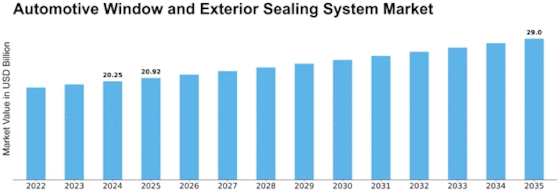

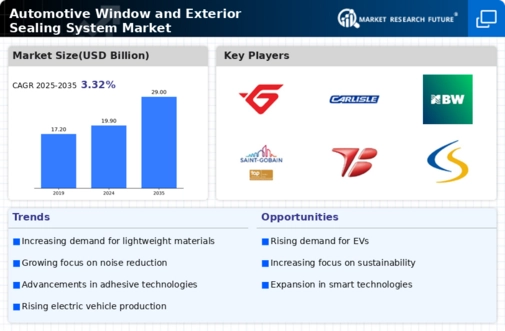
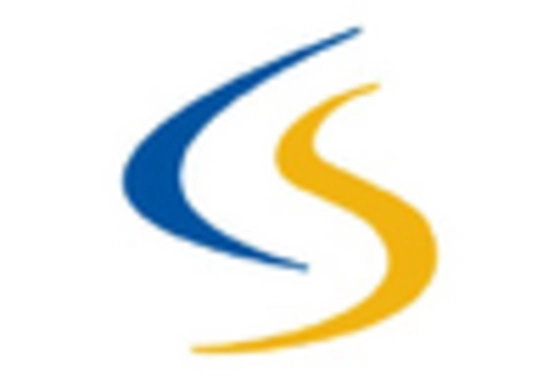
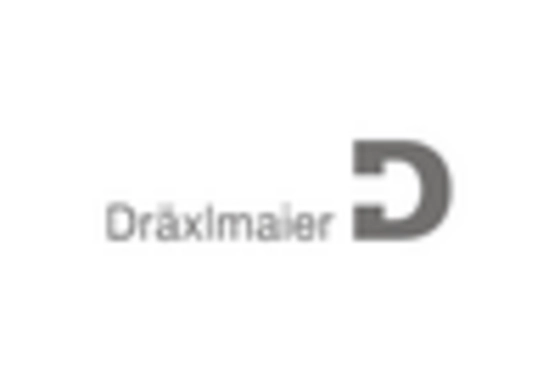
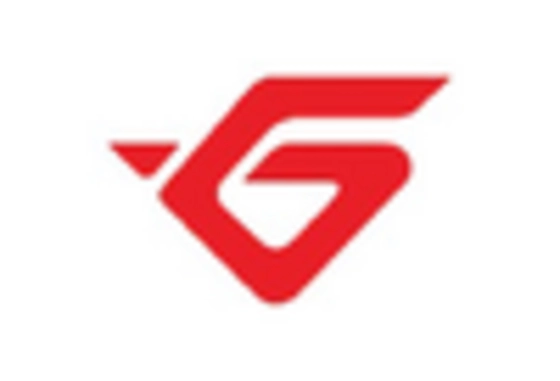
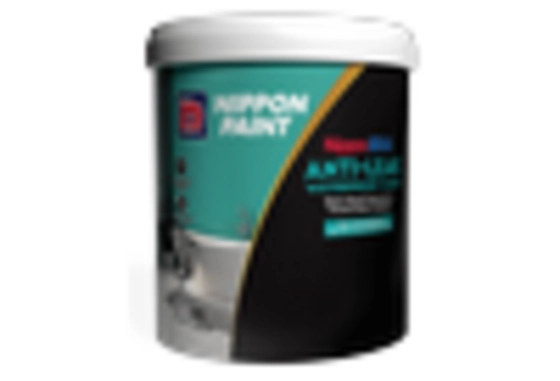
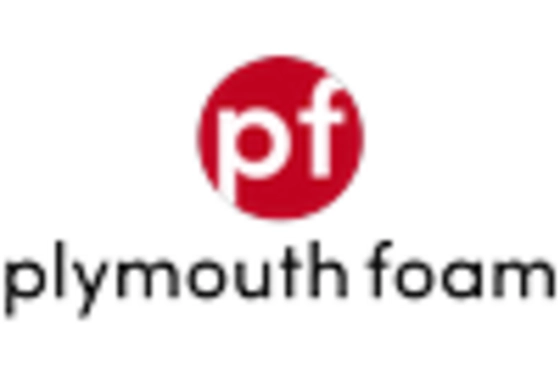


Leave a Comment